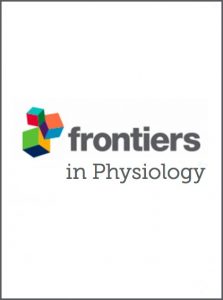Publications

Multiple cryosauna sessions for post-exercise recovery of delayed onset muscle soreness (DOMS): a randomized control trial
Authors: Beata Wolska 1, Lukasz Domagala 2, Aleksandra Kisilewicz 3, Hamidollah Hassanlouei 4, Piotr Makar 5, Adam Kawczynski 6, Sebastian Klich 7
Affiliations:
- Department of Combat Sports, Gdansk University of Physical Education and Sport, Gdansk, Poland
- Department of Athletics, Gdansk University of Physical Education and Sport, Gdansk, Poland
- University WSB Merito, Wroclaw, Poland
- Department of Cognitive and Behavioral Sciences and Technology in Sport, Shahid Beheshti University, Teheran, Iran
- Department of Swimming, Gdansk University of Physical Education and Sport, Gdansk, Poland
- Department of Biomechanics and Sport Engineering, Gdansk University of Physical Education and Sport, Gdansk, Poland
- Department of Paralympic Sport, Wroclaw University of Health and Sport Sciences, Wrocaw, Poland
Journal: Frontiers in Physiology - September 2023, Volume 14, Article no. 1253140 (DOI: 10.3389/fphys.2023.1253140)
-
Field & Applications:
- Sport
- Treatment evaluation
- Fatigue / Overtraining
- Warm-up / Recovery
- Muscle development / Performance
- Reliability
The main goal was to investigate the effectiveness of cryosauna in preventing the development of delayed onset muscle soreness and to analyze the regenerative changes within muscles after acute fatigue-induced exercises.
Thirty-one volunteers were assigned into two groups: 1) an intervention group that participated in cryostimulation after fatigue-induced exercise protocol (CRYO, n = 16) and a control group that performed fatigue-induced exercise protocol, but without any intervention (CONT, n = 15). Main outcome measures include at baseline: blood sample testing (leukocyte content, myoglobin concentration, and creatine kinase activity) and muscle stiffness of lower extremity; immediately after (stiffness), and 24-48-72-96 h post-exercise (blood samples and stiffness). Both groups performed an exercise-induced muscle damage protocol based on repeated countermovement jumps (10 sets, 10 repetitions). The CRYO group underwent a cryosauna (temperature: −110°C, time: 1.5 min per session) intervention during four sessions (i.e., immediately after, 24-48-72 h post-exercise).
Leukocyte content was significantly greater 24-48-72 h after exercise in CONT, compared with the CRYO group (p ≤ 0.05 for all), while creatine kinase activity was greater 24-48-96 h in CONT, compared with the CRYO group (p ≤ 0.05 for all). Muscle stiffness increased significantly in rectus femoris, tibialis anterior, and fibula muscle after 48 h post-exercise (p ≤ 0.05 for all), as well as in tibialis anterior and fibula after 72 h post-exercise (p ≤ 0.05 for all) in the CRYO group.
Multiple cryosauna was an effective recovery strategy that reduced blood biomarkers and muscle stiffness after exercise-induced muscle damage. Moreover, the development of delayed onset muscle soreness, expressed by a greater muscle stiffness post-exercise, was attenuated to the first 48 h.
Keywords: cryotherapy, muscle damage, countermovement jump, myotonometry, recovery
Multiple cryosauna was an effective recovery strategy that resulted in a reduction of blood biomarkers of muscle damage (especially creatine kinase activity) and muscle stiffness after repeated CMJ protocol that led to exercise-induced muscle damage. Moreover, the development of DOMS, expressed by greater muscle stiffness post-exercise, was attenuated to the first 48 h. Thus, these multiple recovery strategies should be recommended for sports medicine professionals, such as physical therapists, athletic trainers, and strength and conditioning coaches, to apply after training, competition, and matches.


